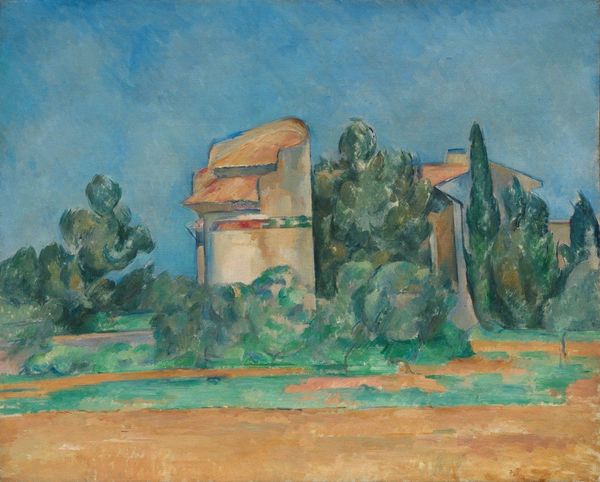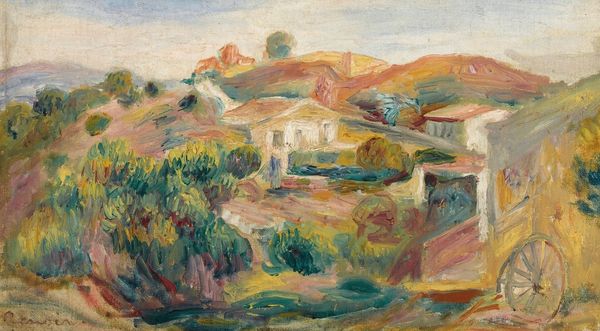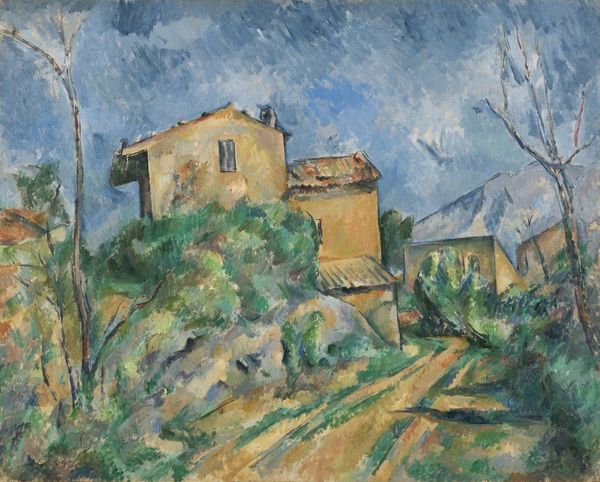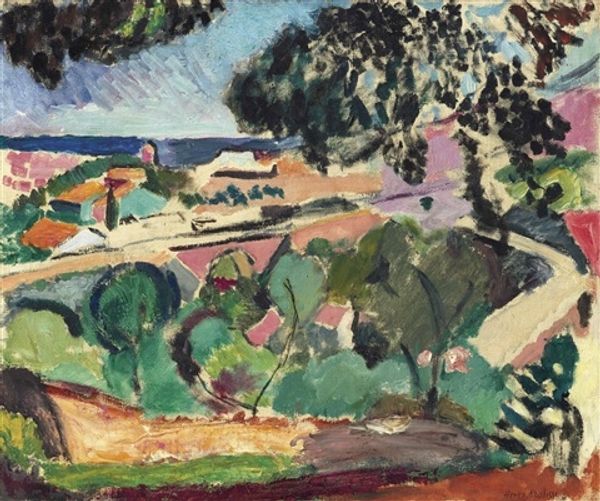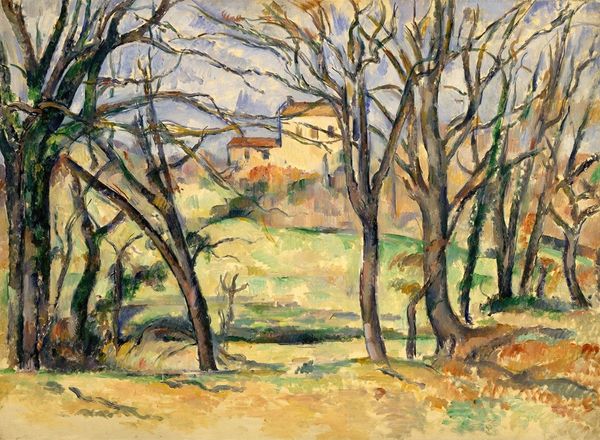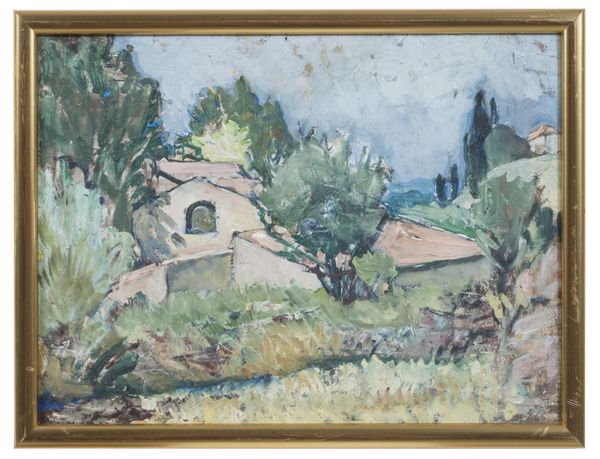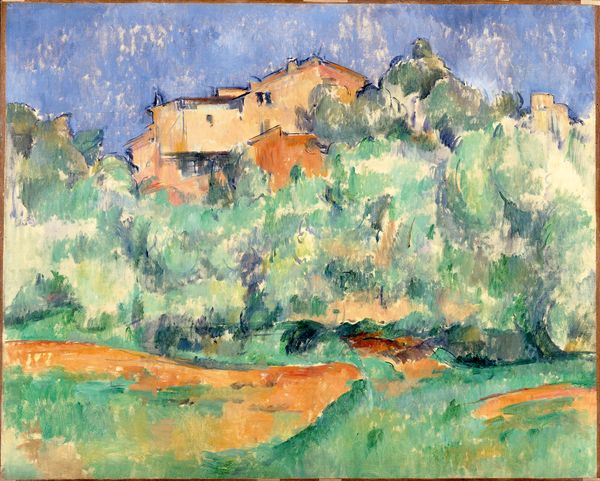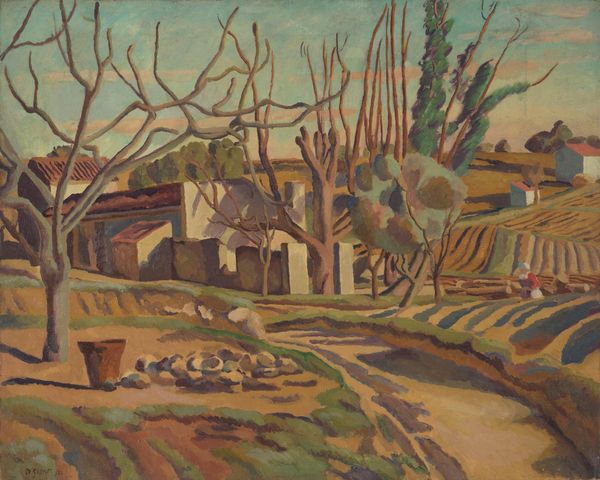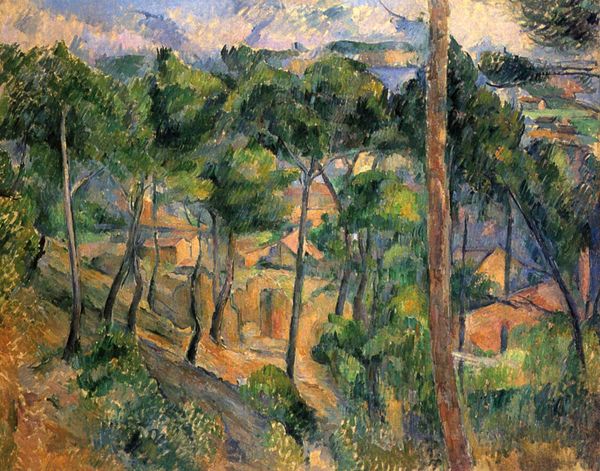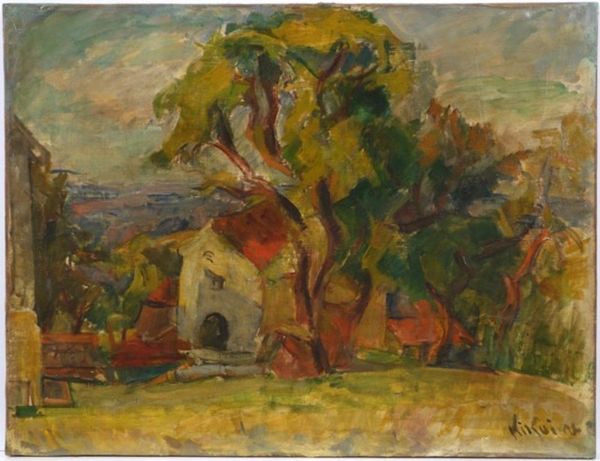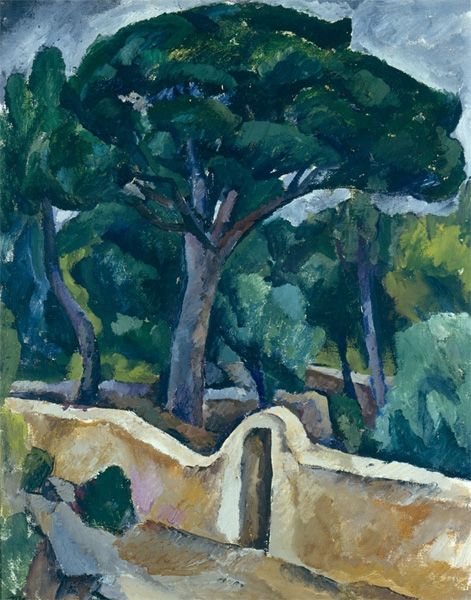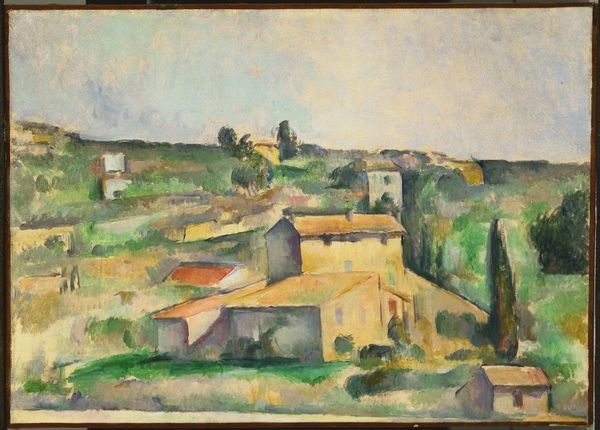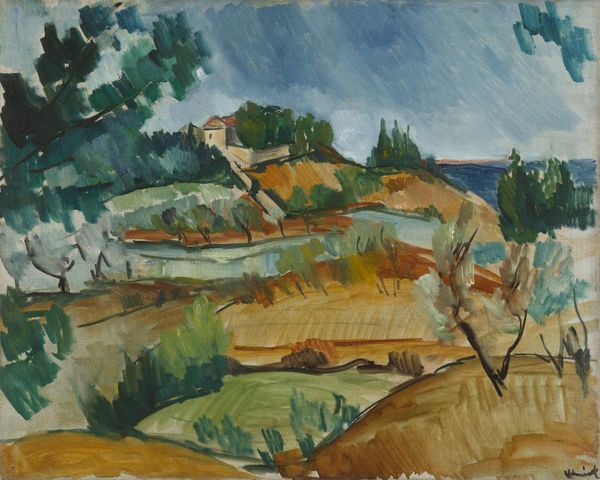
painting, oil-paint
#
painting
#
impressionism
#
oil-paint
#
landscape
#
impressionist landscape
#
oil painting
#
post-impressionism
#
realism
Copyright: Pinchus Kremegne,Fair Use
Curator: What strikes you first about Pinchus Kremegne’s “Paysage du Midi”? It's an oil painting rendered with visible brushstrokes. Editor: The color palette. It's predominantly muted greens and browns, which evokes a kind of peacefulness, but almost to the point of melancholy. It’s quite grounding. Curator: Interesting observation. Focusing on the compositional aspects, notice how the artist employs layered brushwork to build up the forms of the landscape – the trees, the structures – lending a palpable texture to the surface. There's an interesting tension created by this dense impasto. Editor: I’d argue this impasto speaks directly to Kremegne’s roots in the interwar period, during which we witnessed a global yearning for authenticity and an artistic move away from the purely avant-garde back to Realism in landscape, with its implication of the people’s recovery from societal damage. It's like feeling the very earth between your fingers. Curator: Yes, but I think we should look at how he creates a sense of depth. The relative looseness with which objects are described imbues the objects within this southern landscape with dynamism through the manipulation of shadow and light. Look how Kremegne uses similar tonalities of ochre and brown in the architecture as he does with the terrain beyond. The semiotics almost suggest nature blending with this countryside dwelling; they're not fighting for space. Editor: Kremegne himself experienced periods of hardship during the wars; maybe his artistic choices reflect the collective identity seeking comfort. What do you suppose his patrons were reflecting upon during those uneasy times? Curator: An insightful question! But Kremegne gives viewers an experience – one of visual immediacy coupled with formal understanding of color values. What can we conclude about Kremegne’s intentions then? Editor: I take from this a subtle yet potent statement on resilience through the familiar; history reveals our psychological desires in the face of what would otherwise leave a devastating mark. Curator: A wonderful note to end on—it is clear Kremegne's structural acuity and sensitive awareness creates for the viewer something more powerful than Realism, despite its commitment to such forms.
Comments
No comments
Be the first to comment and join the conversation on the ultimate creative platform.
